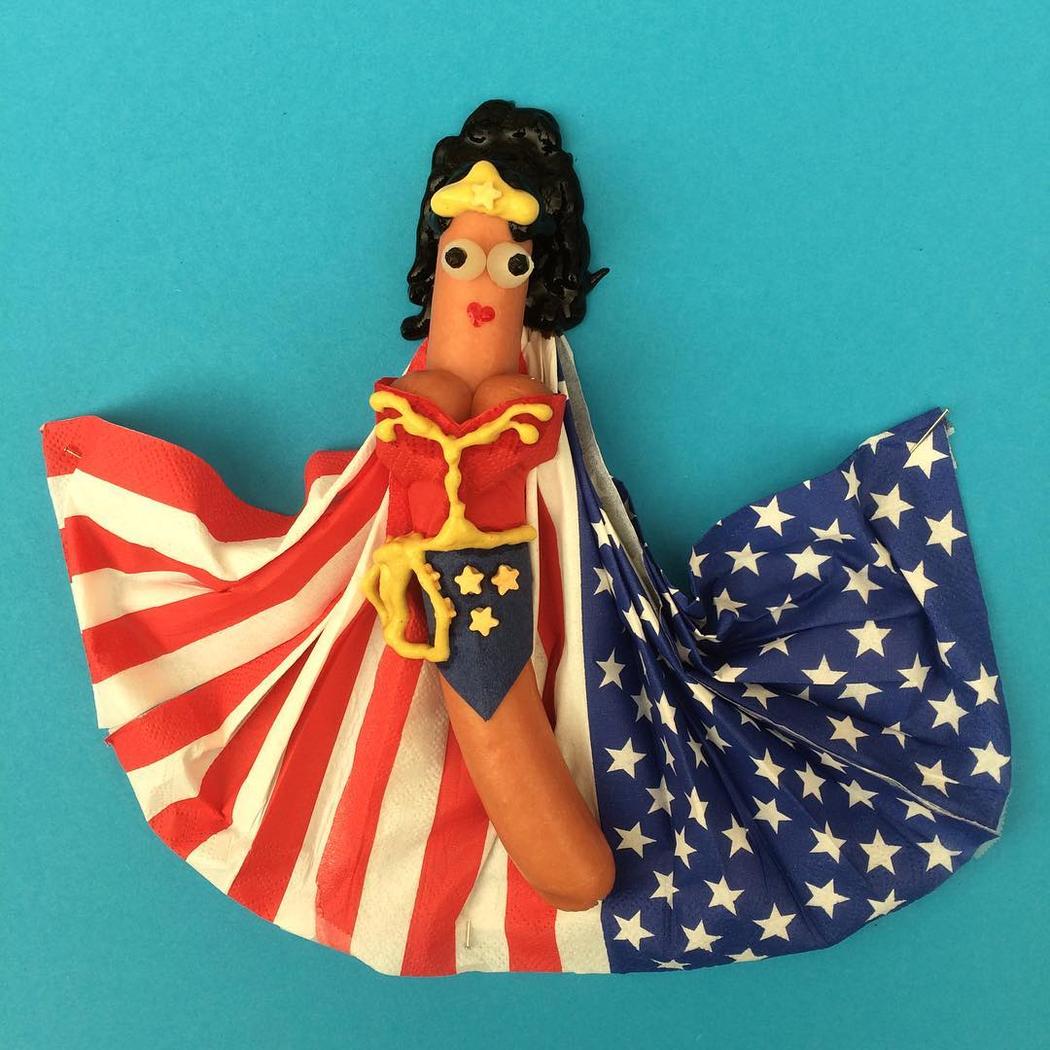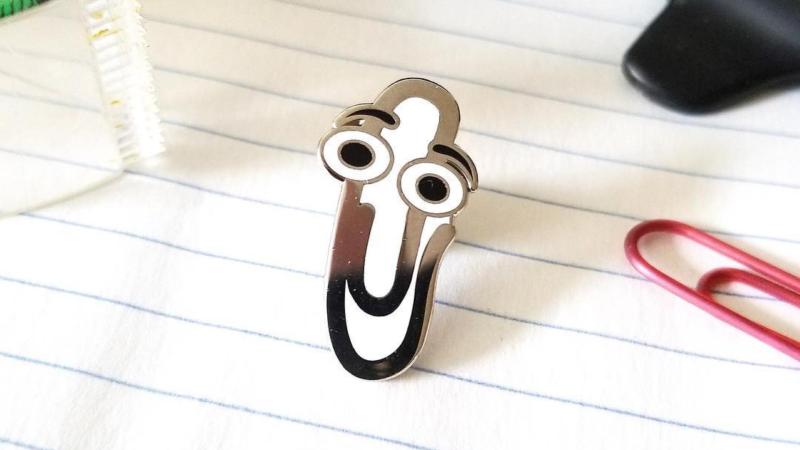I think many artists have a tendency to hit boredom quickly and often. I certainly do. Thus, there’s a need to play, to invent, and reinvent. The men behind Burpzine are still playing with their food, but have a recent focus on wieners, fabulous wieners. And sometimes, pickles.
If these wieners look familiar, it’s because Belgian food stylist Erik Vernieuwe is obsessed with turning them into the most famous faces on the planet. In the digital pages of his Burp Zine, classic artworks and movie scenes become delectable edibles under the trained pasty chef, food historian, and recipe tester’s careful gaze. A work is complete when Vernieuwe gives it a punny name like Wiener de Milo or Robodog. “It’s becoming a bit of an obsession,” he tells Creators. “I see something and think, ‘Can I turn this into a hot dog?'”
Vernieuwe works with his husband, photographer Kris De Smedt, both professionally and when they play with their food. A fashion photographer in their hometown of Antwerp, De Smedt turns Vernieuwe’s pun-filled creations into sleek, Instagram-worthy images. “His way of looking at things and how he sees light and color really works for the kind of food pictures we do together,” Vernieuwe says. They often collaborate on “stupid things” between gigs because, as Vernieuwe puts it, he gets bored really easily.
Burp Zine is their longest-running “stupid thing” so far, perhaps because it’s unabashedly dumb and playful. “It’s just for fun. No depth to it whatsoever,” Vernieuwe says proudly.
I’d argue that it isn’t dumb at all. People need play, and they need playful. We need to be delighted in creativity for its own sake, not always concerned over messaging or significance. Play greatly reduces stress, anxiety, and hostility, and engages imagination, boosts curiosity, brings laughter and joy.
You can lose yourself in the delights of Wienerdom here, or get lost in other play here.
Via The Creators Project.
































